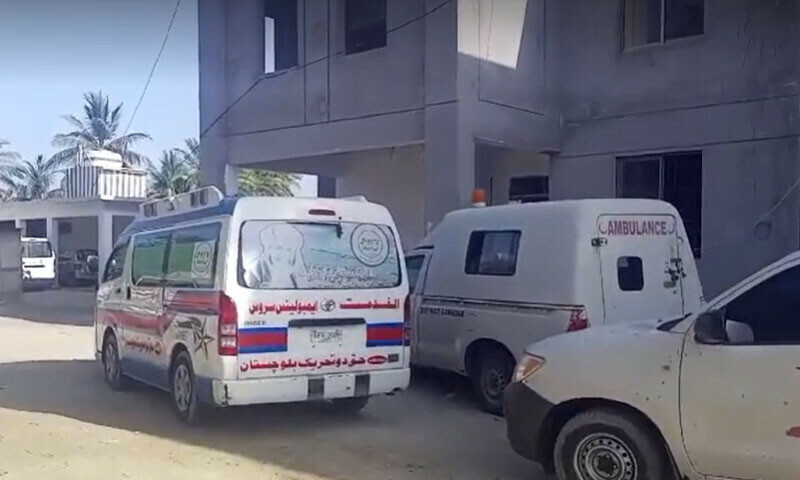Beef.Bhaijan
Minister (2k+ posts)
In Uttar Pradesh's Jhansi, toilets built under Swachh Bharat Mission exist only on paper, open defecation continues

I stood there struggling to make myself fit in the tin-box. The two feet by feet (barely), windowless container was one of the over 90 million toilets India claims to have built under Prime Minister Narendra Modi in the past five years. In trying to figure out how to negotiate my limbs, the curious journey through winding, steep stairs to the rooftop toilet and the subsequent 10-minute struggle to lock the rusty, clanging door was forgotten. The pan of the squat toilet was tiny, fit for a child. It was not meant for the long legs of an adult. The toilet is sparkling new. It was installed two years ago. It’s sparkling because the household doesn’t use it.
In the village of Deora in Jhansi district in Bundelkhand, Suman Devi’s family got money to build a toilet. But the money could not even cover the cost of a toilet pan. The toilet has been relegated to a corner, under lock and key. The other toilet I was standing outside was that of their neighbour.

Representational image. News18
Over the course of three days, I would use many of these shiny, new, but two or three-year-old toilets. These toilets have definitely not ended open defecation in the hundreds of kilometers between Noida in western Uttar Pradesh, and Bundelkhand, near the state’s borders with Madhya Pradesh. Uttar Pradesh is one of India’s largest as well as least-developed states. With a population of over 200 million, it also sends the largest number of lawmakers to Parliament. Bundelkhand is one of the largest regions in the state. Since 2007, the region has been battling severe drought.
“Do you use your neighbour’s toilet too in the mornings?” I asked Nidhi, Suman’s 12-year-old daughter, afterward.
“No, we don’t use that toilet. We go outside. I go with the other women to the fields. There’s only a few who use the toilets,” she said.
Across the hundreds of kilometers, the scenario was not much different. In Mauranipur, the largest town in Jhansi district, Suraj Singh shows me the toilet he received as part of the Swachh Bharat Mission. Singh, a tall, well-built young man, struggles to stand upright as he shows me around. The roof is a slab of board. The walls almost touch each other.
“The allocation for each toilet is Rs 12,000. Look at the toilet. Do you think they would have spent more than Rs 4,000 on this? We told them give us the money, we will build the toilet they said no,” he said “They come, install these toilets and take photos. That’s all there is to it,” he adds.
In Deora, I visit Suman’s sister-in-law Rajyashri’s house, a few metres away. She is roasting chapattis on a mud oven. She points to her half-finished toilet. Just half-walls and a dug pit.
“We got money under the housing scheme, but they deducted the money for the toilet,” Rajshri, a resident of Deora village in Jhansi district said.
“Why?”
“We don’t know, Nobody explained it to us,” she said, pointing to a toilet with a dug pit and tiny walls.
I would come across many such toilets over the three days spread across a distance of over 500 kilometres, until the Uttar Pradesh-Madhya Pradesh border. They were all the same. Made for the sake of ticking a box on a list. These toilets are photo opportunities for village heads and authorities. They are meant for the lists that hang outside government schools in each village in the region. Despite being built over two or three years ago, they are as good as new because they have never been used.
When you look at the toilet you understand why most schemes do not work in this country. It is because they are planned and approved by people who would never use them and doled out by people who would rather pocket the allocations. Which is why these toilets — that crores of rupees of public money has been spent on — are just for show. They haven't contributed much to ending open defecation. They exist on paper. If the village heads are pocketing more than half the allocations for these toilets, and 90 million toilets have been built, just imagine the amount of cash that could have been siphoned off.
A year ago, Abhinav Khari started a petition on Change.org to focus attention on the issue. It managed to grab only 48 supporters. Things remained the same on the ground. In the petition, Khari wrote: “Swachh Bharat Mission is not being implemented corruption free in many villages of Uttar Pradesh. Writing here since my village is no exception.”
“The corruption at the panchayat, block and district-level is of the nature that despite poor construction, villages have been declared as open defecation free (ODF),” the petition said.
“The emphasis on ending open defecation by 2019 should not be a mere counting exercise for the purpose of declaring a village, a city or a state ‘open defecation free’,” said Leo Heller, special rapporteur on the human rights to safe drinking water and sanitation at the 39th Session of the Human Rights Council, with regards to India’s Clean India Mission in September. “Further, the emphasis on behaviour change – to use toilets as opposed to defecating in the open — should not be at the cost of affecting other rights or to result in abusive conduct.”
Various reports from 2016 to 2018 also tried raise awareness about this issue. However, travelling through Uttar Pradesh, a few weeks ahead of the elections, nothing seems to have changed. The toilets are in place. But cleaning India is still a mission. In more ways than one. Corruption has stayed the lifeblood. It runs through the veins of rural India in multiple layers and through successive governments. The Swachh Bharat Mission has also been sucked in.
The campaign is seemingly another corruption-riddled scam that plays with the public money and trust. India’s corruption score remained the same through the last government and the Narendra Modi-led government. It slipped two places in 2017, but according to Transparency International, it was more because corruption increased in other countries, rather than the fact that it decreased in India.
At the end of January, President Ram Nath Kovind said India built over 90 million toilets under the Swachh Bharat Mission. The president also underlined that a lack of toilets had forced crores of Indians, especially "our daughters and daughters-in-law", to an unhealthy and undignified life.
However, in the heartland, not much has changed. That mere posters on government schools and panchayat buildings or calling toilets “izzat ghar” or “honour room” is just a waste of public money.
The author is a multi-award winning independent writer based in New Delhi.
https://www.firstpost.com/india/in-uttar-pradeshs-jhansi-toilets-built-under-swachh-bharat-mission-exist-only-on-paper-open-defecation-continues-6429881.html

I stood there struggling to make myself fit in the tin-box. The two feet by feet (barely), windowless container was one of the over 90 million toilets India claims to have built under Prime Minister Narendra Modi in the past five years. In trying to figure out how to negotiate my limbs, the curious journey through winding, steep stairs to the rooftop toilet and the subsequent 10-minute struggle to lock the rusty, clanging door was forgotten. The pan of the squat toilet was tiny, fit for a child. It was not meant for the long legs of an adult. The toilet is sparkling new. It was installed two years ago. It’s sparkling because the household doesn’t use it.
In the village of Deora in Jhansi district in Bundelkhand, Suman Devi’s family got money to build a toilet. But the money could not even cover the cost of a toilet pan. The toilet has been relegated to a corner, under lock and key. The other toilet I was standing outside was that of their neighbour.

Representational image. News18
Over the course of three days, I would use many of these shiny, new, but two or three-year-old toilets. These toilets have definitely not ended open defecation in the hundreds of kilometers between Noida in western Uttar Pradesh, and Bundelkhand, near the state’s borders with Madhya Pradesh. Uttar Pradesh is one of India’s largest as well as least-developed states. With a population of over 200 million, it also sends the largest number of lawmakers to Parliament. Bundelkhand is one of the largest regions in the state. Since 2007, the region has been battling severe drought.
“Do you use your neighbour’s toilet too in the mornings?” I asked Nidhi, Suman’s 12-year-old daughter, afterward.
“No, we don’t use that toilet. We go outside. I go with the other women to the fields. There’s only a few who use the toilets,” she said.
Across the hundreds of kilometers, the scenario was not much different. In Mauranipur, the largest town in Jhansi district, Suraj Singh shows me the toilet he received as part of the Swachh Bharat Mission. Singh, a tall, well-built young man, struggles to stand upright as he shows me around. The roof is a slab of board. The walls almost touch each other.
“The allocation for each toilet is Rs 12,000. Look at the toilet. Do you think they would have spent more than Rs 4,000 on this? We told them give us the money, we will build the toilet they said no,” he said “They come, install these toilets and take photos. That’s all there is to it,” he adds.
In Deora, I visit Suman’s sister-in-law Rajyashri’s house, a few metres away. She is roasting chapattis on a mud oven. She points to her half-finished toilet. Just half-walls and a dug pit.
“We got money under the housing scheme, but they deducted the money for the toilet,” Rajshri, a resident of Deora village in Jhansi district said.
“Why?”
“We don’t know, Nobody explained it to us,” she said, pointing to a toilet with a dug pit and tiny walls.
I would come across many such toilets over the three days spread across a distance of over 500 kilometres, until the Uttar Pradesh-Madhya Pradesh border. They were all the same. Made for the sake of ticking a box on a list. These toilets are photo opportunities for village heads and authorities. They are meant for the lists that hang outside government schools in each village in the region. Despite being built over two or three years ago, they are as good as new because they have never been used.
When you look at the toilet you understand why most schemes do not work in this country. It is because they are planned and approved by people who would never use them and doled out by people who would rather pocket the allocations. Which is why these toilets — that crores of rupees of public money has been spent on — are just for show. They haven't contributed much to ending open defecation. They exist on paper. If the village heads are pocketing more than half the allocations for these toilets, and 90 million toilets have been built, just imagine the amount of cash that could have been siphoned off.
A year ago, Abhinav Khari started a petition on Change.org to focus attention on the issue. It managed to grab only 48 supporters. Things remained the same on the ground. In the petition, Khari wrote: “Swachh Bharat Mission is not being implemented corruption free in many villages of Uttar Pradesh. Writing here since my village is no exception.”
“The corruption at the panchayat, block and district-level is of the nature that despite poor construction, villages have been declared as open defecation free (ODF),” the petition said.
“The emphasis on ending open defecation by 2019 should not be a mere counting exercise for the purpose of declaring a village, a city or a state ‘open defecation free’,” said Leo Heller, special rapporteur on the human rights to safe drinking water and sanitation at the 39th Session of the Human Rights Council, with regards to India’s Clean India Mission in September. “Further, the emphasis on behaviour change – to use toilets as opposed to defecating in the open — should not be at the cost of affecting other rights or to result in abusive conduct.”
Various reports from 2016 to 2018 also tried raise awareness about this issue. However, travelling through Uttar Pradesh, a few weeks ahead of the elections, nothing seems to have changed. The toilets are in place. But cleaning India is still a mission. In more ways than one. Corruption has stayed the lifeblood. It runs through the veins of rural India in multiple layers and through successive governments. The Swachh Bharat Mission has also been sucked in.
The campaign is seemingly another corruption-riddled scam that plays with the public money and trust. India’s corruption score remained the same through the last government and the Narendra Modi-led government. It slipped two places in 2017, but according to Transparency International, it was more because corruption increased in other countries, rather than the fact that it decreased in India.
At the end of January, President Ram Nath Kovind said India built over 90 million toilets under the Swachh Bharat Mission. The president also underlined that a lack of toilets had forced crores of Indians, especially "our daughters and daughters-in-law", to an unhealthy and undignified life.
However, in the heartland, not much has changed. That mere posters on government schools and panchayat buildings or calling toilets “izzat ghar” or “honour room” is just a waste of public money.
The author is a multi-award winning independent writer based in New Delhi.
https://www.firstpost.com/india/in-uttar-pradeshs-jhansi-toilets-built-under-swachh-bharat-mission-exist-only-on-paper-open-defecation-continues-6429881.html
- Featured Thumbs
- https://images.firstpost.com/wp-content/uploads/2019/04/Rep.jpg
Last edited by a moderator:
































